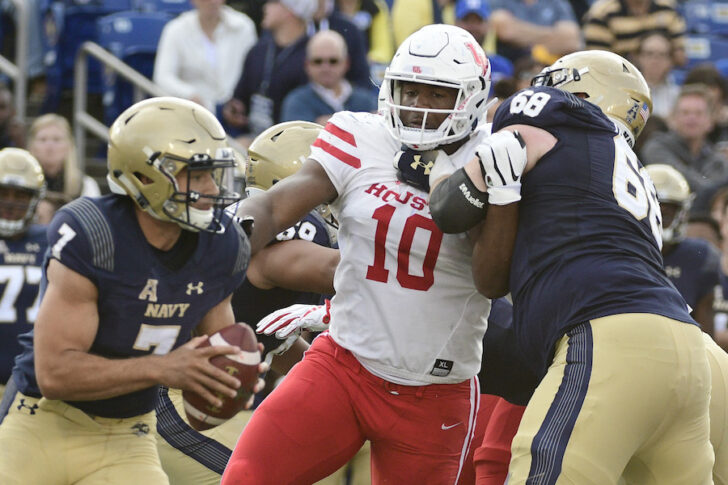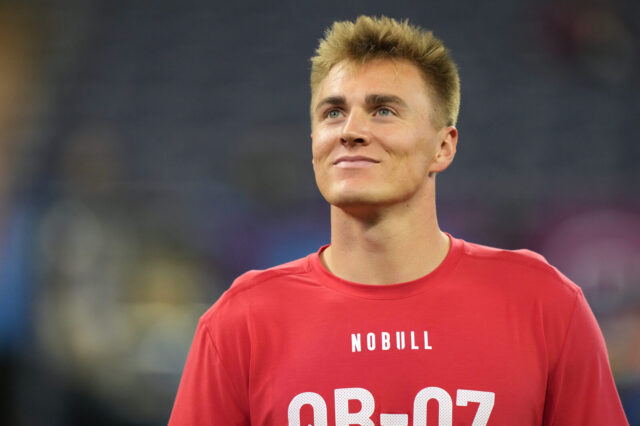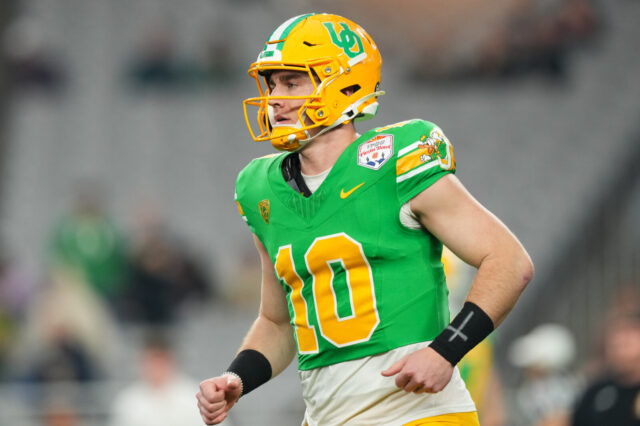Since his freshman year at the University of Houston, analysts have been comparing Ed Oliver to Rams All-Pro defensive tackle Aaron Donald. That’s lofty praise, especially considering that Donald is the league’s best defensive player, winning the Defensive Player of the Year award in 2017 and 2018.
Like Donald, Ed Oliver is a freak athlete with excellent instincts and one of the fastest first steps in the league. He’s so athletic that several teams are considering moving him outside to edge-rusher or even play him in an off-the-ball linebacker role.
Ed Oliver on #NFL team meetings at combine:
"Miami was a little hard on me, but it was alright. That was one of my harder meetings." [said #Dolphins made him break down a lot of film]
"Met with the #Titans, that was one of the teams that wanted me to play outside linebacker."
— Ric Serritella (@RicSerritella) March 27, 2019
That being said, Ed Oliver projects as one of the best defensive tackle prospects of the last several years. Before the start of the 2018 season, Oliver was viewed as the unquestioned top player in the class, and though he is still viewed as a top-five or top-ten player, he no longer sits atop the mountain of prospects. Nick Bosa, Quinnen Williams, Josh Allen and potentially even Devin White have moved ahead of him.
So, what changed?
In large part, nothing. The value of edge-rushers and quarterbacks, and the emergence of Quinnen Williams played a factor, but the only thing to change for Oliver was his production.
After being an absolute terror his freshman and sophomore season, in which he averaged 69 tackles, 19.25 tackles for loss, and 5.25 sacks as a nose tackle, he was nowhere near as effective in his junior season. In 2018, Oliver recorded 54 tackles, 14.5 tackles for loss, and three sacks.
Often, an athlete with Oliver’s physical traits gets better with time as they refine their technique, so why did Oliver’s production get worse over his three years at Houston?
A knee bruise that sidelined Oliver for four and a half games deserves plenty of the credit, but for the most part, his drop off in production has been due to opposing offensive coordinators and the lack of playmakers on Houston’s defensive line.
After wreaking havoc all throughout the 2016 and 2017 seasons, offensive coordinators realized that Oliver was far and away the most dangerous player on Houston’s defense and just schemed to stop him. They would double-team him on almost every play, and when they weren’t double-teaming him, they were triple-teaming him. Just look at how the Texas Tech offensive line chooses to focus almost entirely on Oliver here.
.@UHCougarFB @Edoliver_11 does something to catch your eye in all 33 games he has played. I think he has some real position flexibility at the @NFL. A great and innovative DC can do great things with his talent. #BaldysBreakdowns pic.twitter.com/I1kQHOayLG
— Brian Baldinger (@BaldyNFL) March 25, 2019
That’s the type of matchup Oliver had to face on almost every snap in college.
In the NFL, and especially in Denver, there is far too much talent along the defensive line to devote both guards and center to block one person. Though in Denver, that abundance of talent could be a problem when trying to find a fit for Oliver.
The two holes in the Broncos’ front seven are at nose tackle and inside linebacker, and while Oliver did play nose tackle in college and could probably play inside linebacker at the pro level, his best fit is as a 4-3 defensive tackle or 3-4 defensive end.
This means that the Broncos may choose to pass on Oliver as they already have Shelby Harris, Derek Wolfe and Adam Gotsis at defensive end. It’s arguably the deepest position on the entire roster. Although, it sounds like individual positions on the line don’t matter much to head coach Vic Fangio.
Vic Fangio on Shelby Harris:
"I think he can play anywhere on the d-line for us."
He said he thinks guys in the NFL nowadays have to be able to be interchangeable at all positions up front.
Proof is in the pudding with how he split DL snaps in Chicago.
— Sayre Bedinger (@SayreBedinger) March 26, 2019
Oliver certainly brings that versatility Fangio wants in a defensive lineman, and with Harris and the rest of the Broncos’ defensive ends taking more snaps at nose tackle, a spot could open up for Oliver.
While Oliver’s fit with the Broncos could be debated, the Broncos fit for him would be a slam-dunk. With Bradley Chubb and Von Miller on the edge, and Denver’s talent along the line, teams would rarely be even to double-team Oliver without allowing a free rusher. That’s not even to mention all the clever plays and switches a defensive mind like Fangio could draw up with that assortment of elite pass-rushing talent.
At the combine, Fangio said, “We will take the best player available.” While defensive end isn’t a need for Denver, if Oliver is on the board for the Broncos at the tenth pick, there will be little to no doubt who that best player available is.



